Hideout homes of history’s most wanted criminals
The secret lairs of the world's most infamous villains

Bonnie and Clyde’s garage bolthole in Joplin, USA
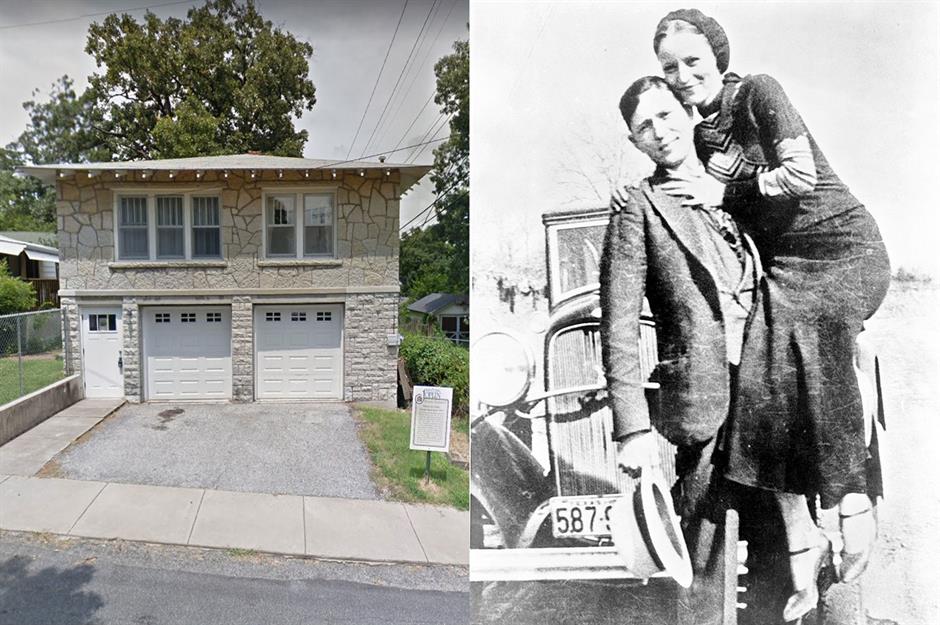
Having already committed five homicides, Depression-era outlaws Bonnie Parker and Clyde Barrow moved into this unassuming garage apartment in Joplin, Missouri on 22 March 1933. They lived there with Clyde's brother Buck, his wife Blanche and Barrow gang member William Daniel Jones. Constructed in 1927, the modest building served as their hideout for several weeks.
Bonnie and Clyde’s garage bolthole in Joplin, USA
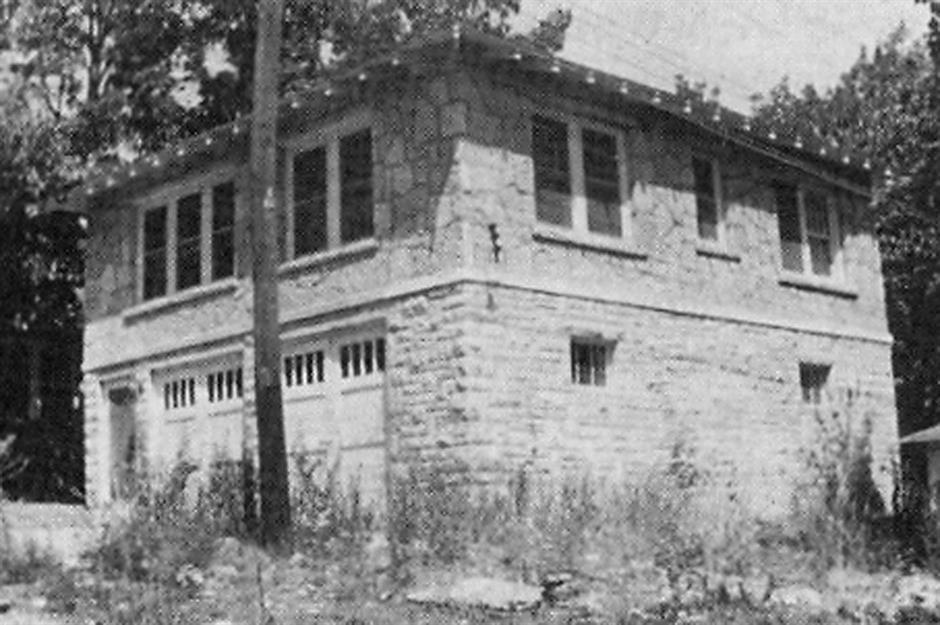
Though they were on the run, the ruthless twosome and their gang were anything but discreet during their stay at the apartment. The group would come and go at all hours and went through a case of bootlegged beer a day. Fueled by all the booze, they stayed up most nights till the break of dawn playing rowdy card games.
Bonnie and Clyde’s garage bolthole in Joplin, USA
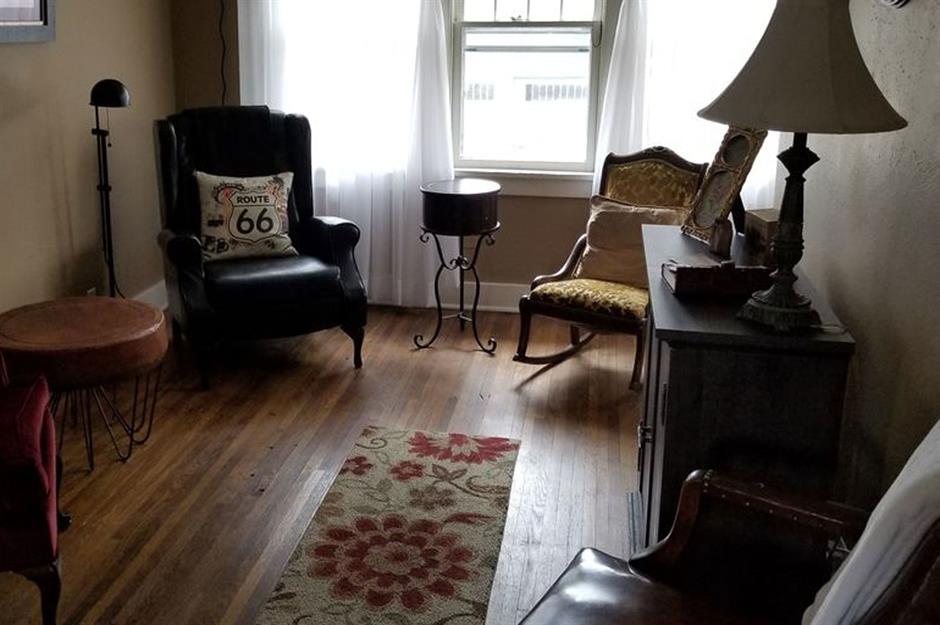
The outlaws gathered in the apartment's small living room to get drunk, play cards and put together jigsaw puzzles. During the daytime, Bonnie would lounge around in her kimono dressing gown writing poetry. Once other members of the gang had hit the sack, Jones slept on a mattress on the floor.
Bonnie and Clyde’s garage bolthole in Joplin, USA

The gang stored their guns and ammo in a cabinet in the room and polished their guns there. On one occasion, Clyde accidentally fired a Browning Automatic rifle while cleaning up. Needless to say, all the commotion coming from the apartment didn't go unnoticed by the neighbors, who became increasingly suspicious.
Bonnie and Clyde’s garage bolthole in Joplin, USA

One neighbor eventually had enough of the incessant noise and reported the group to the police. Five officers arrived to investigate on 13 April 1933. When law enforcement turned up, Blanche was playing solitaire in the kitchen while Bonnie was in the bedroom penning poetry. The men were outside. Then all hell broke loose.
Love this? Step back in time with these mummified mansions that are stuck in the past
Bonnie and Clyde’s garage bolthole in Joplin, USA

The Barrow brothers and Jones opened fire, killing one of the police officers instantly and fatally wounding another. They then got into their car with Bonnie and Blanche and made a speedy getaway. The law eventually caught up with Bonnie and Clyde, who died in a shootout the following year. Today, the garage, which was restored by a local minister, is available to rent via HomeAway.
Ma Barker’s lakeside hideout in Ocklawaha, USA
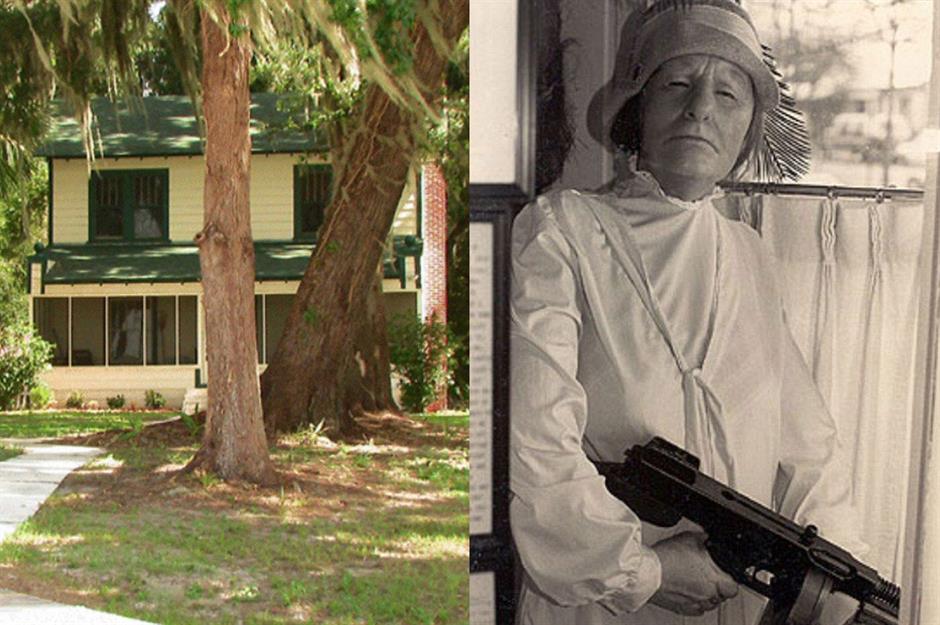
Kate, aka Ma Barker, was the matriarch of the terrifying Barker-Karpis gang which, like the Barrow outfit, operated in Depression-era America. Though she was described by FBI director J. Edgar Hoover in the 1930s as "the most vicious, dangerous and resourceful criminal brain of the last decade", her involvement in the criminal activities of the gang has been questioned.
Ma Barker’s lakeside hideout in Ocklawaha, USA

The gang went on a horrifying crime spree from 1931 to 1935, perpetrating a string of robberies, kidnapping and murders. Branded 'Public Enemy No 1', Ma Barker and her cronies sidestepped the law by retreating to this lakeside hideout in rural Ocklawaha, Florida.
Ma Barker’s lakeside hideout in Ocklawaha, USA
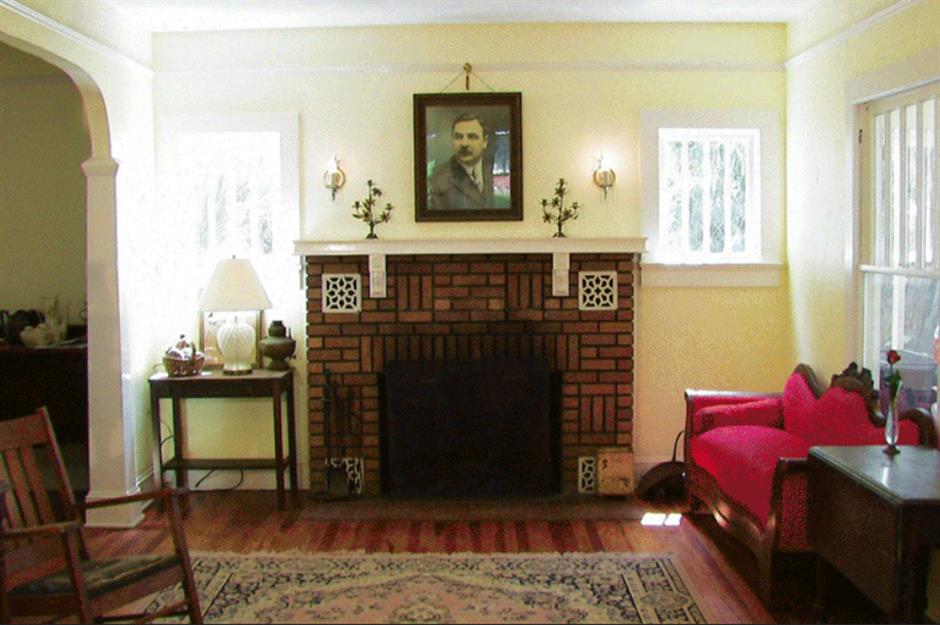
The Barkers and their Karpis associates rented the property using the fake name 'Blackburn', and remained undetected until 8 January 1935 when Ma Barker's son Arthur was arrested in Chicago. The FBI discovered a map he was carrying with details of the Florida hideout and made a beeline for the Sunshine State.
Ma Barker’s lakeside hideout in Ocklawaha, USA
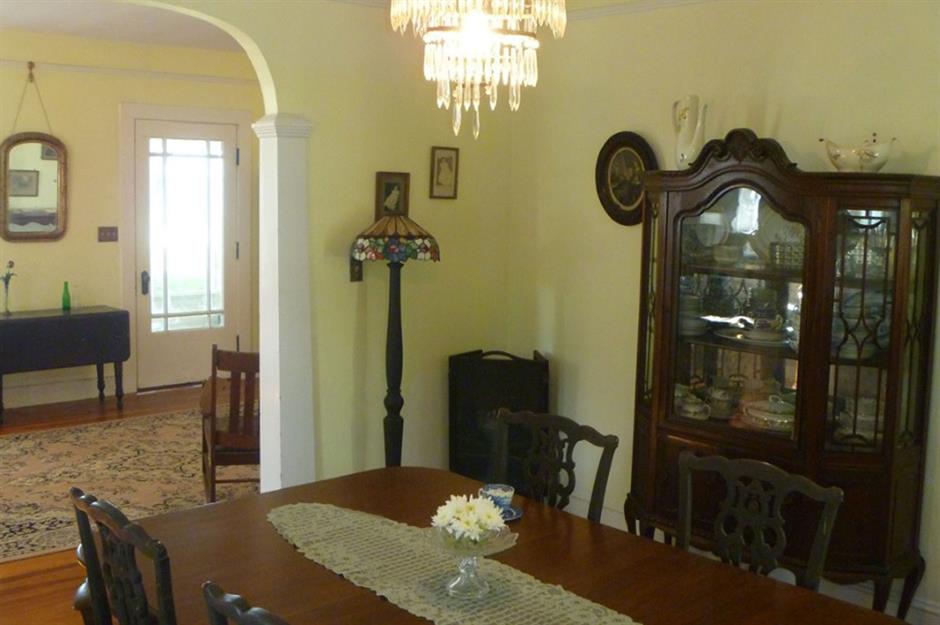
On the morning of 16 January 1935, federal agents surrounded the property. At the time, only Ma Barker and her son Fred were present – the other gang members had left the house several days prior. The FBI ordered the couple to surrender but Fred fired his gun and a protracted shootout ensued.
Ma Barker’s lakeside hideout in Ocklawaha, USA
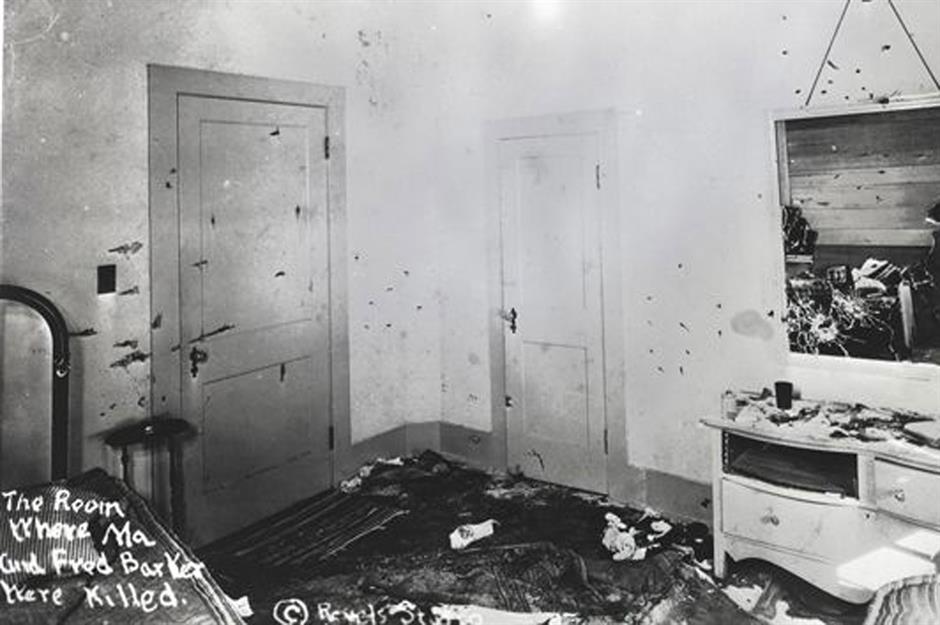
The standoff lasted for around four arduous hours. When nearby residents got wind of the gunfight, they reportedly came to watch the shocking event unfold, bringing picnics and treating it – rather macabrely – as a fun day out. The FBI fired 2,000 shots in total, eventually killing Ma Barker and her son, who were holed up in one of the bedrooms.
Ma Barker’s lakeside hideout in Ocklawaha, USA

Following the brutal shootout, the house was left much as it was in 1935 and bullet holes can still be seen in some of the walls and furniture. The property went on the market in 2012 and the local county is in the process of turning it into a museum.
Hungry for more? Check out these unbelievably expensive abandoned mansions
Great Train Robber’s seaside sanctuary in Torquay, UK
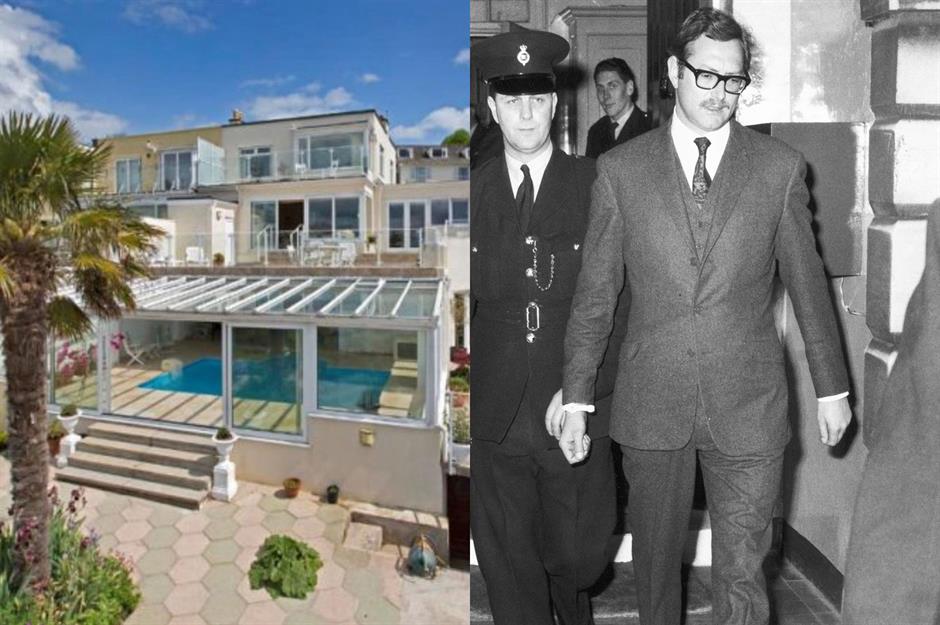
Bruce Reynolds was the brains behind the Great Train Robbery which, at the time, was the UK's largest heist. The audacious plunder of a Royal Mail train that was traveling from Glasgow to London on 8 August 1963 netted the kingpin and his gang a record $3.3 million (£2.6m), which works out at around $67 million (£53m) in today's money.
Great Train Robber’s seaside sanctuary in Torquay, UK
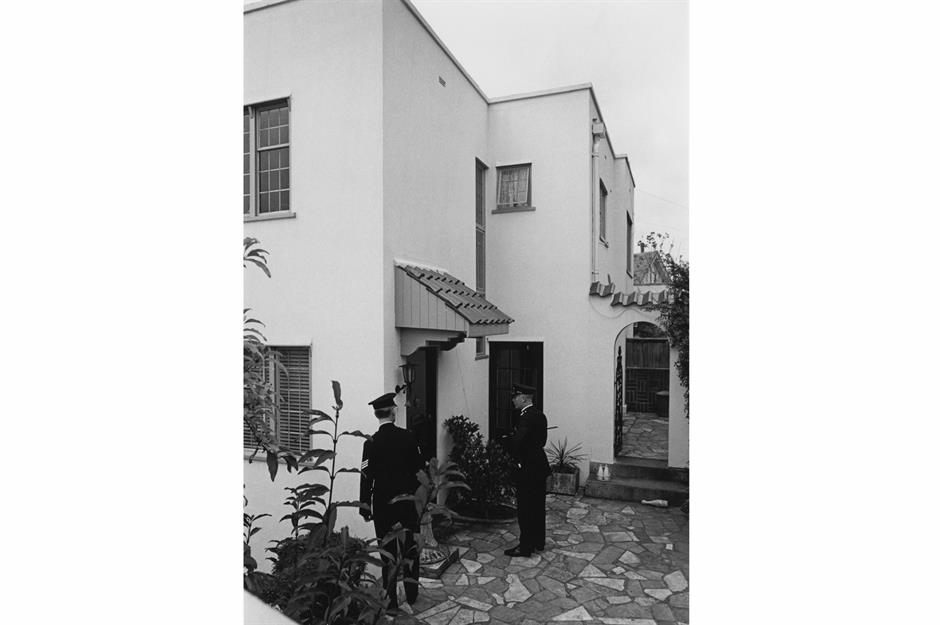
Great Train Robber’s seaside sanctuary in Torquay, UK
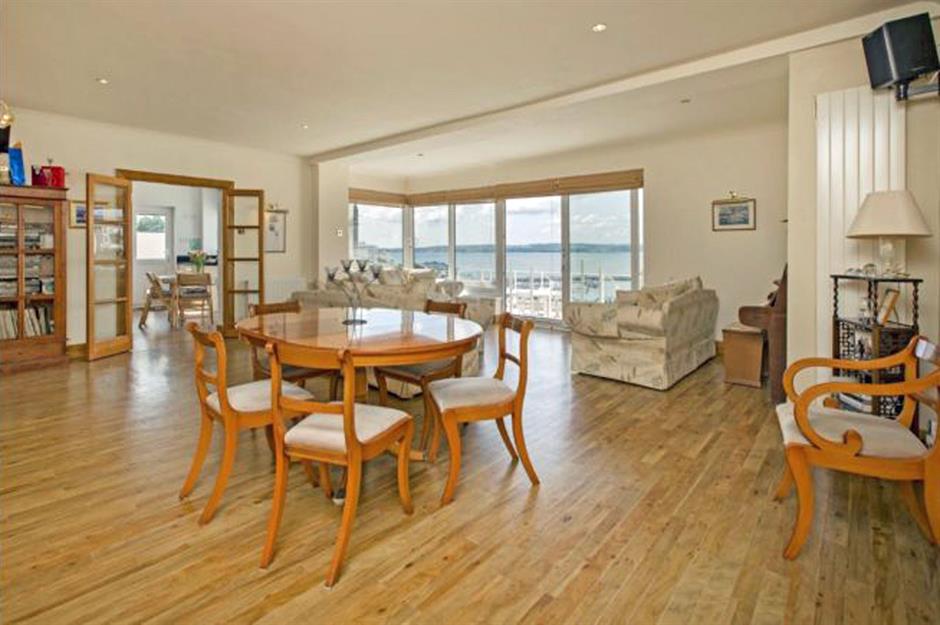
Reynolds just couldn't resist getting in contact with his former associates in London's criminal underworld and the police, who had moles in all the right places, soon sussed out that the mysterious Hiller was, in fact, the most wanted thief in the country.
Great Train Robber’s seaside sanctuary in Torquay, UK
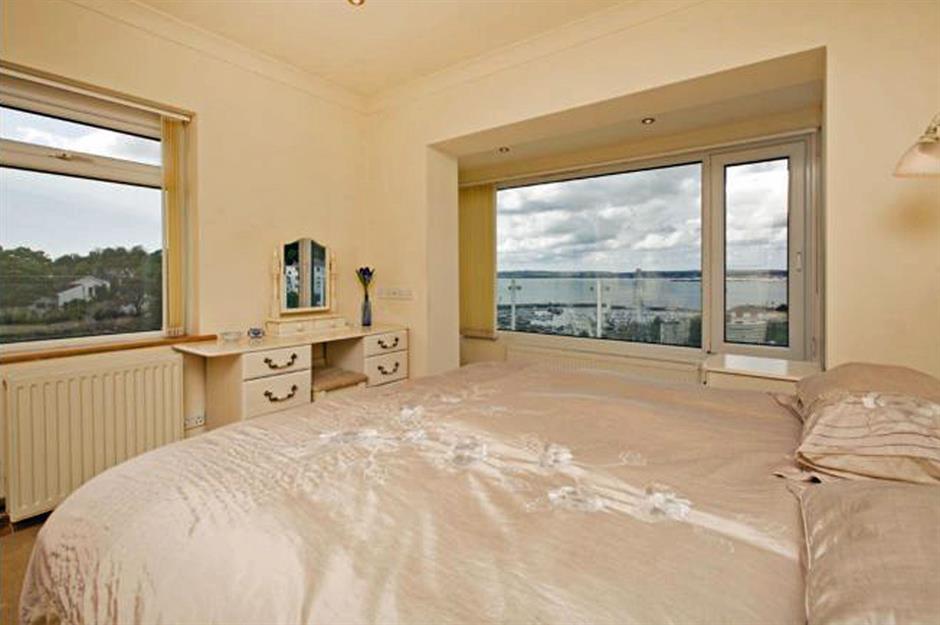
Great Train Robber’s seaside sanctuary in Torquay, UK

The seaside villa was snapped up in 1972 by Philip and Su Laureston. The couple extensively renovated the property, which had fallen into disrepair. The floorboards, for instance, had been torn up by the police who were searching for hidden stashes of cash. The Laurestons also installed a stunning indoor pool.
Great Train Robber’s seaside sanctuary in Torquay, UK
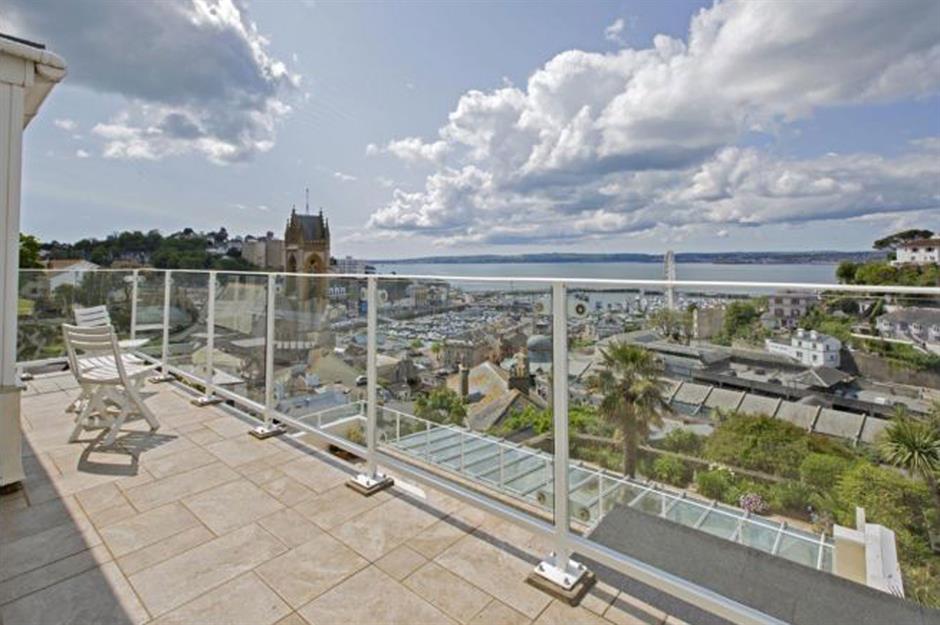
Boasting spectacular views, Villa Cap Martin went on the market in 2017 via Purplebricks with an asking price of $1 million (£795k), which was no doubt inflated by the home's association with one of Britain's most infamous criminals.
Love a good tale? This abandoned mansion has a tragic Titanic connection
Jesse James' clapboard refuge in St. Joseph, USA
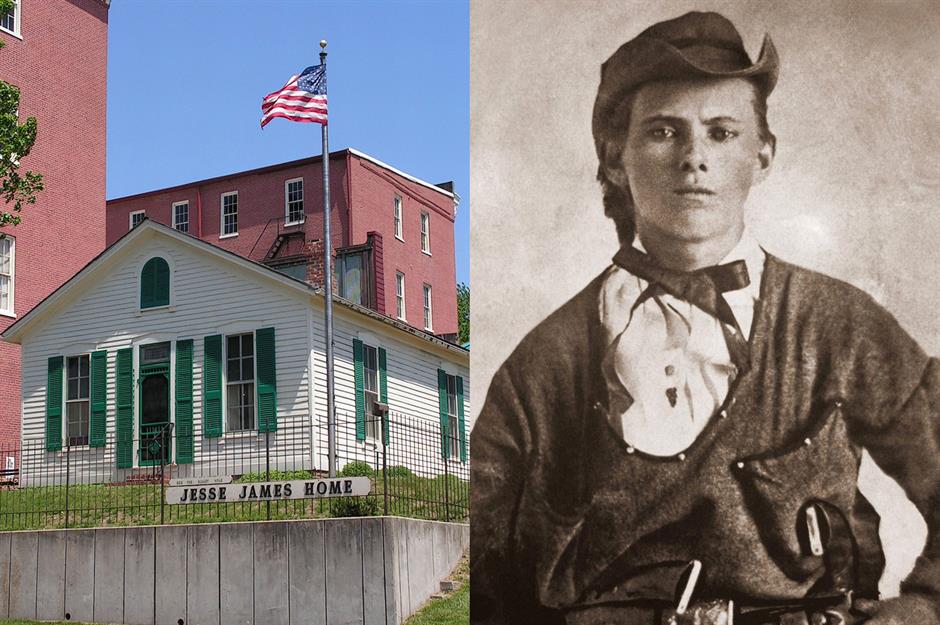
Jesse James' clapboard refuge in St. Joseph, USA

With a posse hot on his trail, James moved with his family to the house in the November of 1881. By this point, law enforcement had all but wiped out his gang with James and his brother Frank among the few survivors.
Jesse James' clapboard refuge in St. Joseph, USA

James asked newly recruited gang member Bob Ford and his brother Charley to move into the house as protection, and the pair duly accepted. Unbeknown to James, Bob Ford had entered into covert negotiations with Missouri governor Thomas T. Crittenden and was planning to turn his boss over to the authorities and collect a bounty on his head.
Jesse James' clapboard refuge in St. Joseph, USA
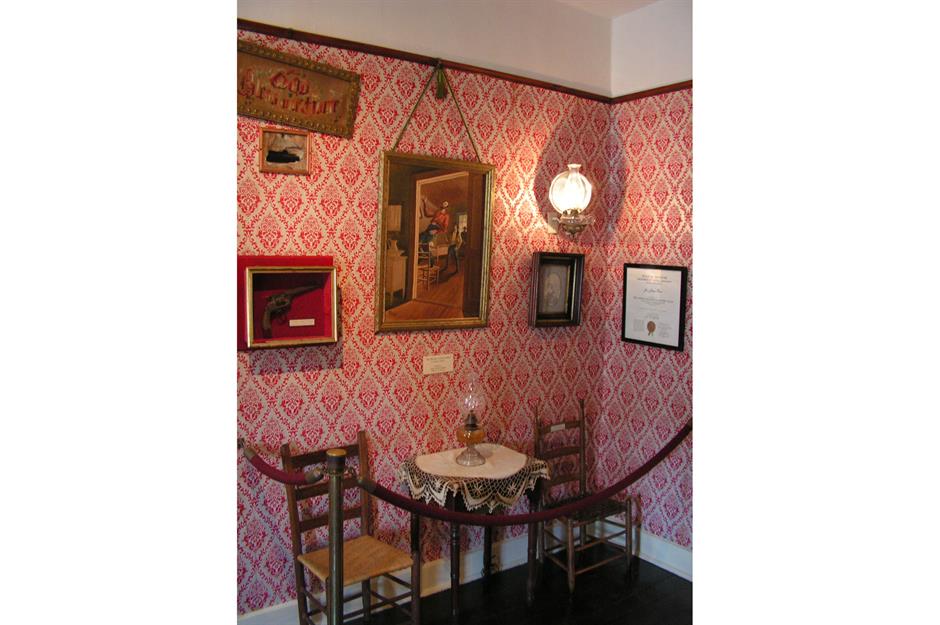
On 3 April 1882, James ate breakfast with the Ford brothers before retiring to the living room to prepare for a robbery in Platte City. Though James had grown suspicious of the Fords, he unaccountably put his guns on the table and went to clean a dusty picture that was hanging over the mantelpiece.
Jesse James' clapboard refuge in St. Joseph, USA

Jesse James' clapboard refuge in St. Joseph, USA
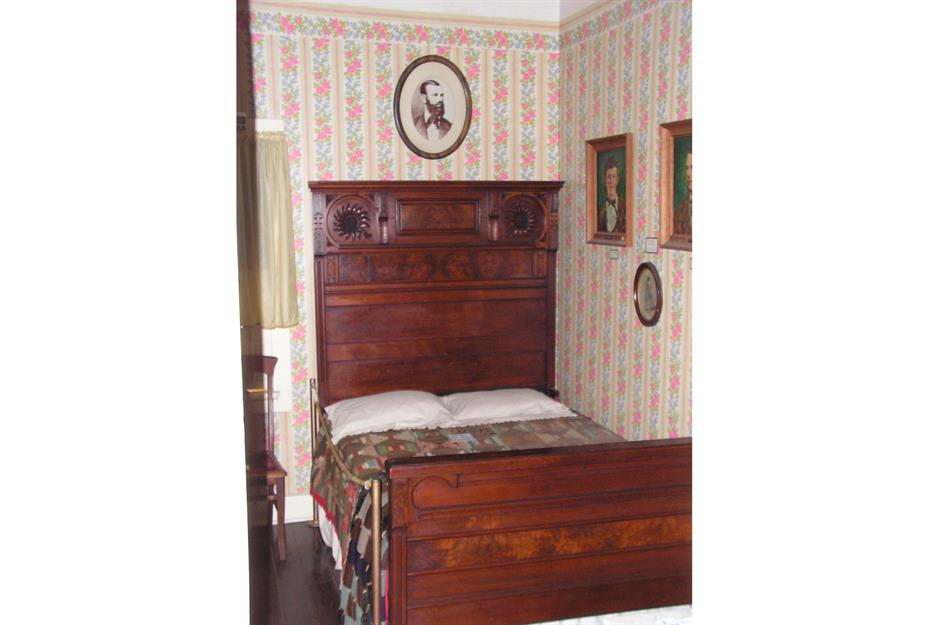
After pleading guilty, they were swiftly sentenced to death by hanging but were pardoned by governor Thomas T. Crittenden. Bob Ford only received a fraction of the promised reward and fled Missouri not long after. James' house has since become a tourist attraction. Currently a museum, the building has been moved twice and is now located two blocks from its original location.
Fascinated? These homes for sale have an amazing history...
Pablo Escobar's paradise retreat in Tulum, Mexico

The most notorious drug lord of all time, Pablo Escobar is estimated to have been worth up to $30 billion (£24bn) during the early 1990s, which makes him the richest villain in history. At the height of his powers, Escobar was said to have supplied 80% of all of the cocaine in the USA.
Pablo Escobar's paradise retreat in Tulum, Mexico
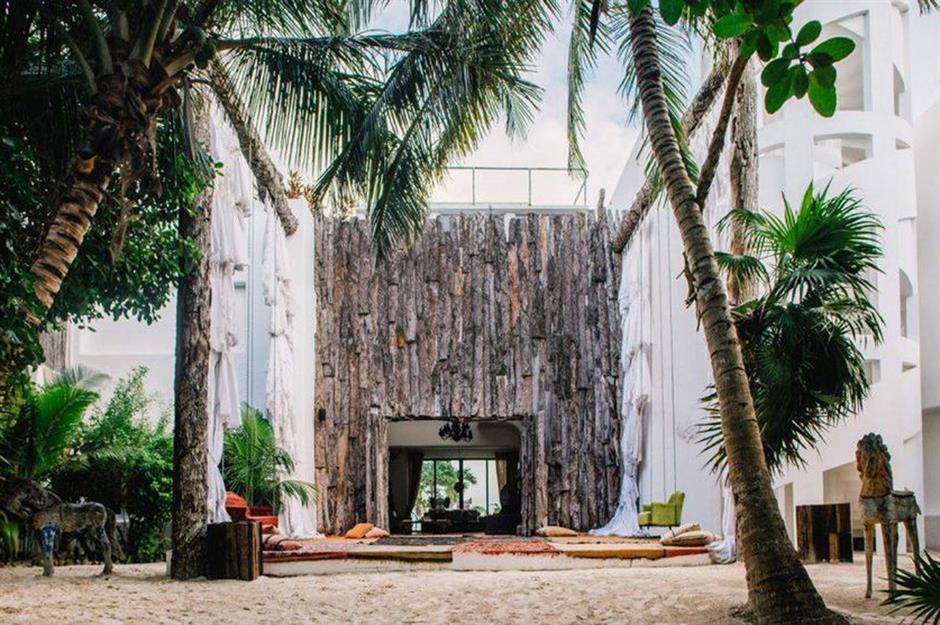
While his main residence was in Colombia, the King of Cocaine owned this idyllic hideaway in Tulum, Mexico during the 1980s and would head there to hide out and elude the FBI and Colombian police. Secluded and shielded by dense foliage, this beachfront estate was kitted out with bulletproof walls and would have been heavily guarded.
Pablo Escobar's paradise retreat in Tulum, Mexico
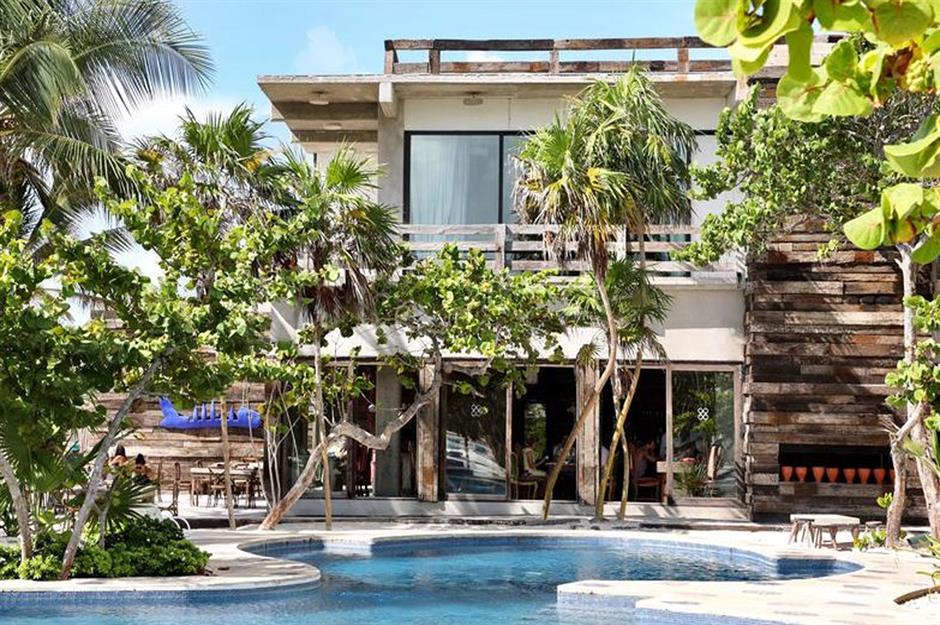
Despite these precautions, the Colombian cartel boss was shot dead in his hometown of Medellín on 2 December 1993. Following Escobar's death, the paradise property in Tulum was pretty much abandoned to the elements and left to rot.
Pablo Escobar's paradise retreat in Tulum, Mexico

In 2012, the estate was discovered by New York art dealer Lio Malca. The avid collector acquired the property and set about turning it into a lavish five-star art hotel. The 71-room Casa Malca opened its doors to paying guests in 2015 and is now regarded as one of Mexico's finest hotels.
Pablo Escobar's paradise retreat in Tulum, Mexico

Highlights of the hotel include a secret underground swimming pool, which is located beneath the main outdoor pool and wows with mood-enhancing lights that change color. Escobar is said to have hidden vast amounts of his illegal profits in the subterranean space.
Pablo Escobar's paradise retreat in Tulum, Mexico
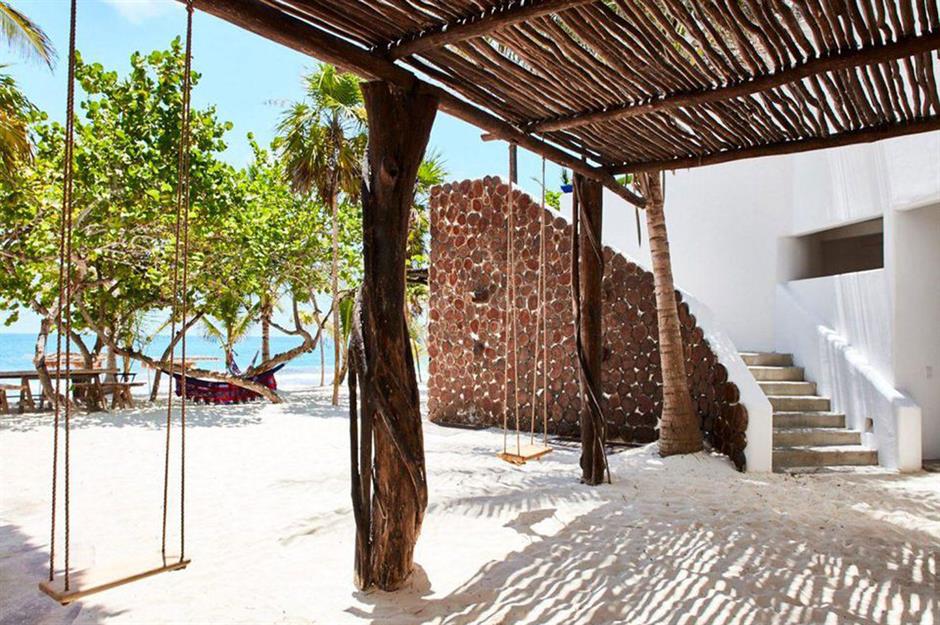
Other impressive USPs of the drug lord's former retreat includes artworks by the likes of Jean-Michel Basquiat, Jeff Koons and KAWS, not to mention a Keith Haring-themed bar, two restaurants serving exquisite Yucatán cuisine and a blissful beach garden complete with swings and hammocks.
Love this? Take a look at these real-life mafia mansions
Comments
Be the first to comment
Do you want to comment on this article? You need to be signed in for this feature